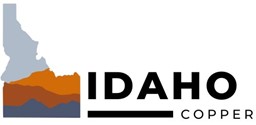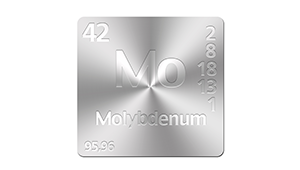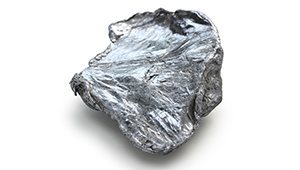In 2013, CuMoCo established an Idaho-based corporation named Idaho CuMo Mining Corporation (ICMC). In January 2023 the company name was changed to Idaho Copper Corporation (IDCU) The Idaho-based team is credited with successfully moving the Project through the Supplemental Environmental Assessment that concluded in October 2015 with a Finding of No Significant Impact and Decision Notice issued by the U.S. Forest Service.
As the CuMo Project moves forward, having Idaho-based operations and leadership will provide greater access to relevant agencies and help to build state, local and community relationships. The ongoing engagement of Idaho professionals, local labor, geologists, and mining industry experts confirms ICMC’s commitment to Idaho and Boise County.
The CuMo exploration team maintains best management practices with respect to groundwater, hydrogeology and environmental protection in conducting its federally approved activities on private and public lands.
The Project region, Southern Idaho, is rooted in mining history and natural resource economies. A recent survey by Boise State University highlighted the overwhelming support of Idahoans for responsible mining with 80.4 percent of respondents affirming their belief that mining can be conducted without negatively impacting the environment. Local, state and federal governments have shown great interest in and are formally declaring their support for the CuMo Project. Furthermore, a shift to pro-development policies within federal agencies has created momentum for strategic minerals projects.
IDAHO COPPER CORPORATION LEADERSHIP
Andrew Brodkey
Andrew brings 30+ years of experience in the mining industry as a CEO, and in senior legal and business development roles with major mining houses and junior companies. He is a mining engineer and lawyer, and started his career in the industry as VP, General Counsel with Magma Copper Co. (NYSE-traded spin off from Newmont Mining) and later as VP, Business Development for BHP Copper after the friendly merger with BHP Billiton, the world’s largest mining enterprise.
Read more
He later founded the International Mining and Metals Group of CB Richard Ellis, a boutique M&A practice with major mining clients, and thereafter was the CEO of four publicly traded junior explorers. Currently an expert consultant on mining M&A, technical, valuation, development, legal and operational issues, an expert witness in mining related disputes. He graduated with a BSc in Mining Engineering (with distinction) from the University of Arizona, and a J.D. cum laude from Creighton University.
Steven Rudofsky
Steven began his career at Glencore, the world’s largest trader of minerals and metals. He subsequently served as Managing Director of TransCanada Pipeline Europe Ltd (now TC Energy Corp) and held a senior position at Credit Agricole CIB. He is a principal of Talex Commodities Capital Ltd, a boutique merchant bank focused on mining and natural resources. He is a graduate of Clark University and Emory University School of Law and is a member of the New York Bar.
Robert Scannell
Robert is the founder of Tradewinds Investment Management LP, a hedge fund focused on emerging markets and natural resources. He has served as a director of numerous public and private companies and previously held roles in institutional sales at Merrill Lynch & Co. He holds a BA & MBA from Penn State University, a JD from Purdue University, and is a Chartered Financial Analyst.
John R. Moeller, PhD
Dr. Moeller’s 35 year career in private consulting, state government, and the university setting provides a broad perspective into planning, permitting, design, implementation, public outreach, and compliance. His strong understanding of and practical approach to rules, regulations, and organizational structures routinely leads clients to call upon him to negotiate permits and compliance issues with agencies.
Read more
He is a Principal of Forsgren Associates, a civil and environmental engineering firm, with offices across the western U.S. He is the company’s Vice President of Environmental Services and a member of its board of directors.
Dr. Moeller has taken the lead in representing CuMoCo before state, local, and federal agency officials and the public about the CuMo Project’s exploration. He was the point person to track, expedite and respond to the project’s highly visible and contentious environmental assessment. His team has identified nearly 100 permits, approvals, exemptions and consultations that may be required before a mine could go into production.
Dr. Moeller managed water quality and hazardous materials programs during a nine-year tenure at Idaho Department of Environmental Quality and has maintained and grown extensive relationships across a wide spectrum of state and federal agency staff and managers. Early in his career, he co-founded a state and federal interagency task force to permit a $400 million open pit molybdenum mine in the headwaters of Idaho’s Salmon River. That unique regulatory concept shaved months off the permitting process and saved an estimated $30- 50 million in development costs. He chaired a governor appointed task force to develop regulations for utilizing cyanide to leach precious metals from ores. That negotiated rulemaking was supported by a wide array of shareholders and approved by the legislature.
Dr. Moeller earned his PhD in Water Quality/Limnology from Idaho State University, his Master of Science in Zoology/Water Quality from the University of Kentucky, and his Bachelor of Science in Electrical Engineering, also from the University of Kentucky. For the past ten years, he has been an adjunct graduate faculty member at Boise State University, teaching water quality management.
He was awarded an Environmental Protection Agency Bronze Medal for his efforts associated with hazardous waste capacity assurance and development of pollution prevention programs. He served on the board of directors for the Idaho Conservation league.
The addition of Dr. Moeller to the Board would bring extensive hands-on permitting experience and knowledge of state and federal agencies and procedures.
Technical advisers to Management
Shaun Dykes, M. Sc.(Eng.), P.Geo
Shaun M. Dykes, M.Sc. (Eng.), P. Geo was Mosquito’s Exploration Manager from 1995 until 2011, during which tenure he played a key and leading role in the acquisition and development of Mosquito’s principal mining properties: CuMo, Pine Tree, Spring Creek, Trikay and Blackpoint. He has been successful at combining the two disciplines of geological exploration and computer data processing into a powerful mineral property identification, evaluation and development tool.
Read more
Techniques developed combined with over 35 years of practical experience in the management, exploration and analysis of mineral properties, at varying stages of development from grass roots to pre development, have been directly involved or responsible for the discovery of several mineral deposits, five of which have been placed into commercial production.
Mr. Dykes spent 15 years working as a project geologist with Westmin Resources Ltd. He has managed a wide variety of projects with budgets ranging from $50,000 to $5,000,000 including Big Missouri, Stewart, B.C., from initial stages of exploration to pre production. He was responsible for the outlining and discovery of the Premier open pit deposit as a result of analysis and computerization of an extensive historical database. During this time, he worked directly as a team member in the development and subsequent production of the Stewart properties, including both open pit and underground mining. Working with an integrated team of geologists and engineers, Mr. Dykes’ work included ore reserve estimation, economic analysis, pre feasibility and feasibility studies, and environmental permitting in both Canadian and United States jurisdictions. It also included presentations to all groups involved in the projects: banks, investors, analysts, and government officials in both the United States and Canada. This was followed up with actual production experience in mining of the S 1 zone and Premier open pits, where as a member of the production team he was given the responsibility for blast hole reserves, ore outlines and production.
Mr. Dykes founded Geologic Systems Ltd. in 1994 to supply geological expertise to the mining and exploration community. Clients included Cominco (now Teck Resources Ltd.), Rio Algom, Echo Bay, Billington, Placer Dome and Redfern Resources. He has been involved in the evaluation, exploration and/or development of some of the world’s major mineral deposits including: CuMo, Voisey’s Bay, Cariboo Gold, Petaquilla, Dunka Road (now Northmet), Red Chris, Tulsequah, Pine Point (extension), Wernecke, HW and Myra Falls and Premier.






